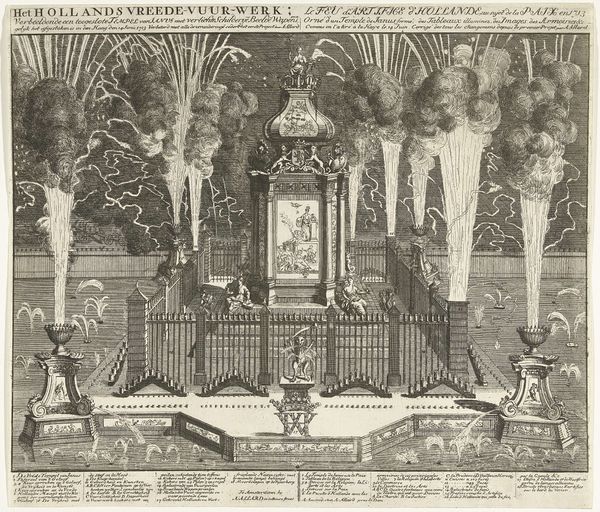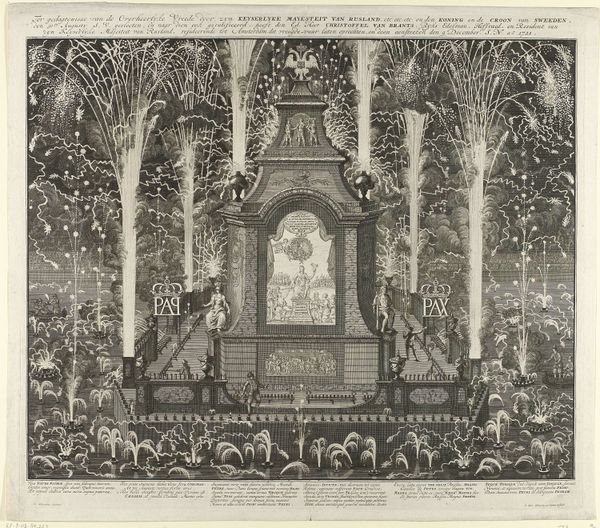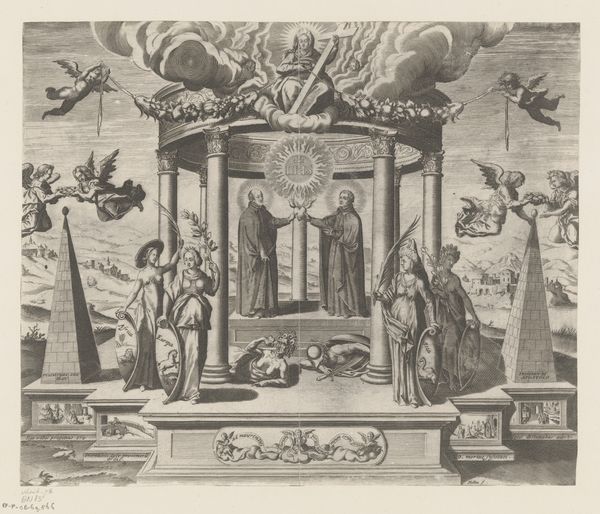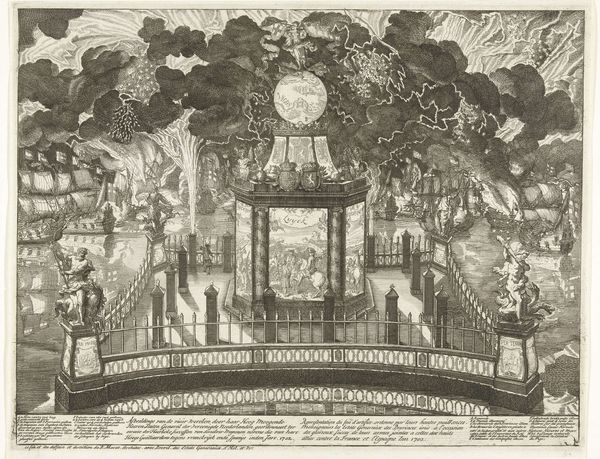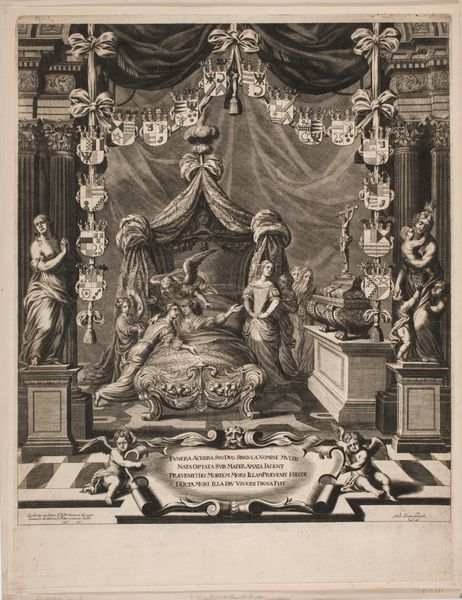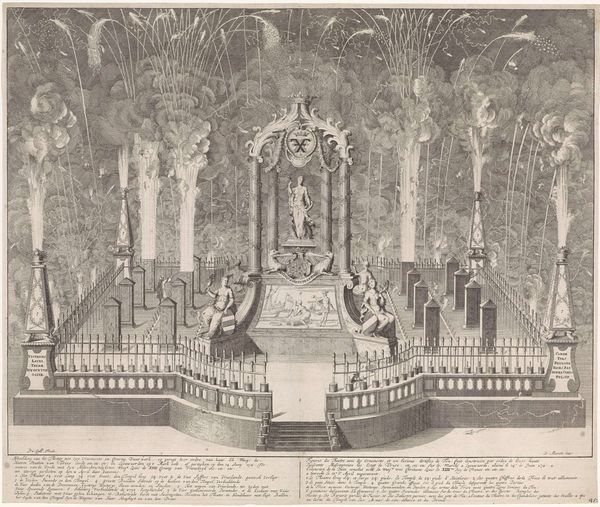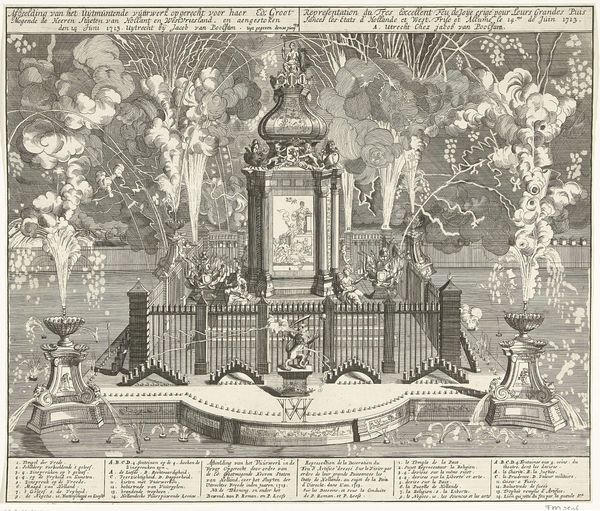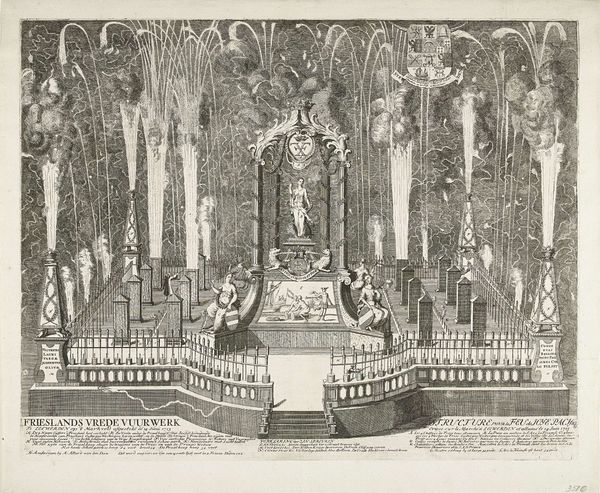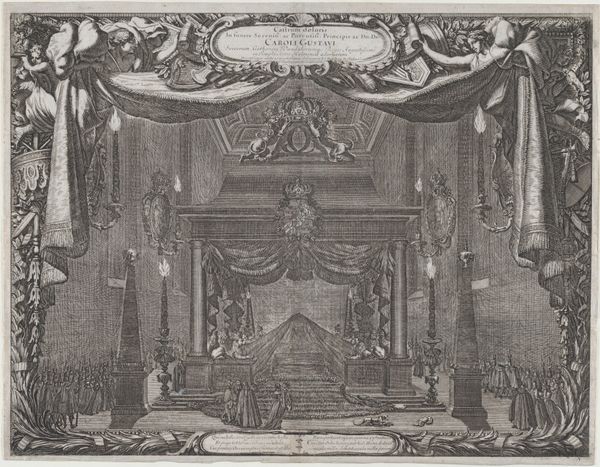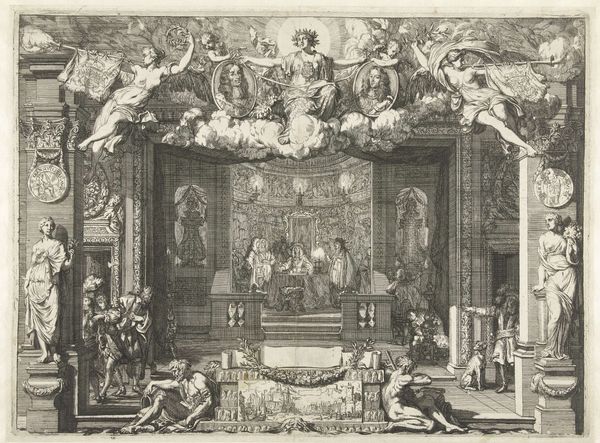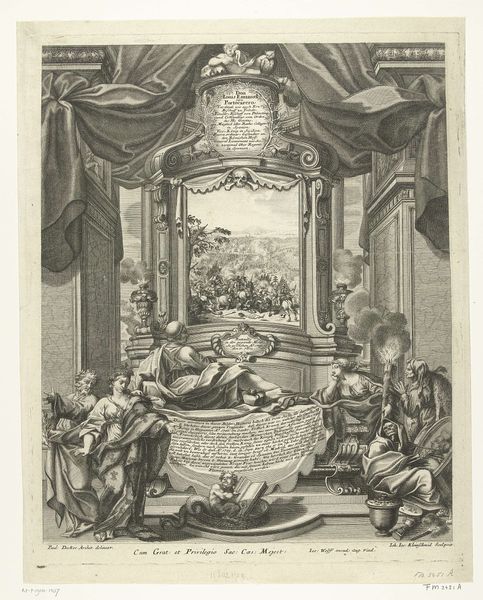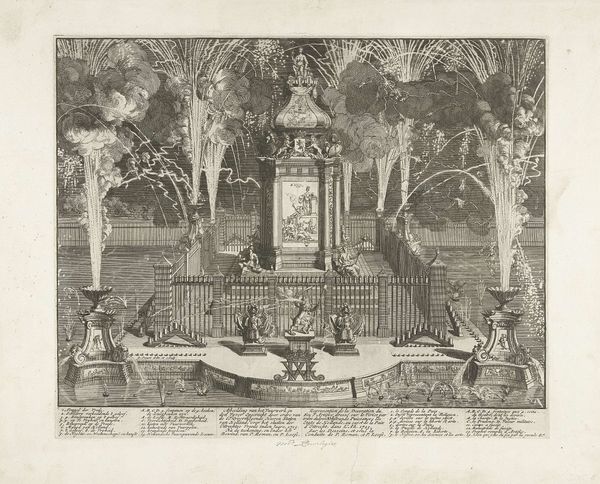
print, engraving
#
baroque
#
pen drawing
# print
#
pen illustration
#
line
#
cityscape
#
history-painting
#
engraving
Dimensions: height 292 mm, width 468 mm
Copyright: Rijks Museum: Open Domain
Curator: Today we are looking at a print titled "Vuurwerk ter ere van de vrede van Utrecht, 1713" created between 1713 and 1715 by Pieter van Buysen Jr. Editor: Immediately, I'm struck by the overwhelming detail. The line work is so precise, capturing the fleeting nature of fireworks amidst this monumental structure. It almost feels like controlled chaos. Curator: Indeed, this engraving commemorates the Treaty of Utrecht, which marked the end of the War of the Spanish Succession and redrew the political map of Europe. This celebration was, in essence, a display of Dutch power and prosperity, staged for public consumption. Editor: The composition directs the eye upwards, following the trajectory of the fireworks, but also down into the crowd, anchored by that heavy base and all of that text to the left, I'm drawn in, yet also a little bit lost in the sheer volume of visual information. It feels almost like a deliberate visual strategy. Curator: Absolutely. The print aimed to legitimize the political settlement. Consider how it visually communicates messages of peace and national pride. The very act of creating and distributing this image reinforced Dutch cultural and political values. The etched text is not insignificant; it narrates the spectacle for future viewers, cementing the historical significance of the Peace of Utrecht. Editor: You're right. There's a deliberate layering of symbolism here—fireworks as fleeting brilliance, set against the implied permanence of the architectural elements, statues and ornamentation. I hadn't initially considered the intended political dimensions as carefully. Curator: Artworks such as these are not simply aesthetic objects. They actively shaped public opinion and affirmed the ruling elite’s control during this era. What better way than an awe-inspiring and costly fireworks show? Editor: This has shifted my view considerably. I now appreciate how profoundly Pieter Van Buysen managed to compress this singular public display of celebration into a communicable symbolic encounter that's fixed in time on the page. Curator: Understanding the history behind an image often enhances how we experience its visual form, and vice-versa. They work hand-in-hand.
Comments
No comments
Be the first to comment and join the conversation on the ultimate creative platform.
